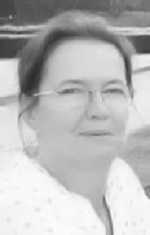New Modalities in Cancer Imaging and Therapy - PDF Version
5-8 October 2022
Erquy, France
Endorsed by ESTRO
Conference report
The fifteenth international workshop of the tumour targeting, imaging, radiotherapies network of the Cancéropôle Grand Ouest (interregional structure whose vocation is to bring together the various players in cancer research) took place in October 2022 in a beautiful area in the West of France, Côtes d’Armor, in Erquy. It brought together chemists, biologists, physicists and physicians involved in the development of molecular and external beam radiotherapies for use in oncology.
The workshop covered the latest advances through discussion of several deliberately varied themes: the role of artificial intelligence (AI) in imaging and radiotherapies, new tools for imaging and external radiotherapy, theranostic aspects, molecules and contrast agents, vectors for use in innovative combined therapies, and the use of alpha particles in therapy.
These themes were covered by keynote speakers. Jean-Emmanuel Bibault (Paris, France) started the workshop with a review of multiple applications of AI in oncology. He discussed how AI could be used at every step of care, from epidemiology and screening, to treatment planning and delivery. He highlighted how AI could be used to create predictive models in oncology and to improve the follow-up of the patient.
Then, Kuangyu Shi (Bern, Switzerland) presented the methodological challenges and clinical opportunities of total-body PET imaging and shared some developments and applications from the University of Bern.
Next, Iuliana Toma-Dasu (Stockholm, Sweden) focused on adaptive radiotherapy based on tumour responsiveness, with the potential of PET to personalise the treatment considering the intrinsic responsiveness and individual dose distribution that determine the need for later treatment adaptation.
Kristina Djanashvili (Delft, The Netherlands) presented the potential uses of nanoparticles for theranostic applications and, more specifically, her research, which is focused on porous nanoparticles of zeolite type. These can host metal cations that have various physical properties.
Nicolas Chouin and Romain Eychenne (Nantes, France) reviewed the different aspects of the use of alpha particles in preclinical and clinical applications and their dose calculation and showed that targeted alpha therapy had become one of the most promising options for therapy in nuclear medicine.
The lecture by Gilbert Fruhwirth (London, UK) introduced the theranostic concept and examples of its application to cancer. He focused on the opportunities that are offered by molecular imaging in this context.
Finally, Prisca Boisguerin (Montpellier, France) explained the development of a new family of amphipathic peptides called tryptophan-(W) and arginine-(R)-rich amphipathic peptides (WRAPs), which are able to form stable peptide-based nanoparticles (PBNs) for small interfering (si)RNA delivery.
This workshop was aimed at the sharing of scientific results and the facilitation of exchanges between experienced and young researchers in the fast-growing field of imaging and radiotherapies.
A total of 68 participants, of which 30 were young researchers, PhD students and post-doctoral scientists selected for oral communication, and eight invited speakers, gathered over four days. The deliberately small format of the workshop and its remote location enabled participants to meet multiple scientists and establish effective contacts for future scientific collaborations.
A total of 30 travel grant awards were given to the young selected researchers for oral presentations (PhD students and post-doctoral scientists). Each award consisted of free registration to the workshop, accommodation and contribution to travel expenses (up to €250).

Françoise Léost, on behalf of the organising committee
Project manager
Cancéropôle Grand Ouest
Nantes, France